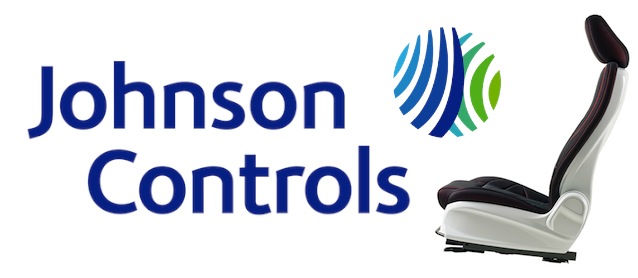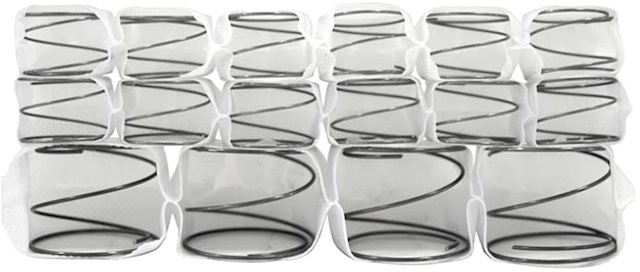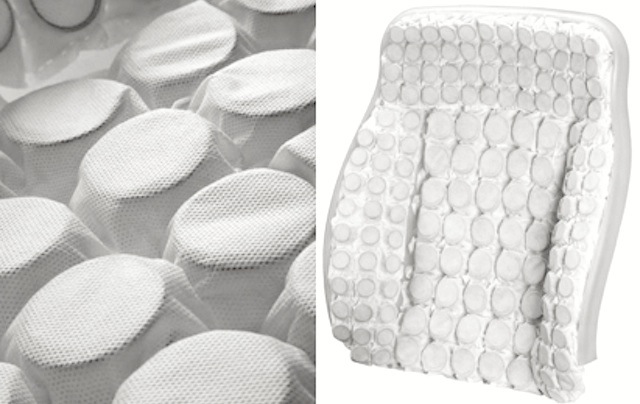Never mind foam rubber. Johnson Controls, interior supplier to the world’s leading automakers, has developed a car seat that — like a bed mattress — provides cushion and support via coiled steel springs.
Johnson Controls calls it the ComfortThin Seat because it’s smaller, thinner and lighter than traditional car seats, but just as comfortable:
With growing demand for fuel efficiency, vehicles have had to become smaller and lighter. Still, consumers don’t want to sacrifice roominess or comfort. So, manufacturers need new ways to maximize interior space. One potential solution: Thinner seats. But there’s a practical limit on how thin a seat can be and still deliver the comfort consumers want.
Johnson Controls researched alternatives and found one in, of all places, a mattress. Not just any mattress, but the kind produced by British luxury bedding manufacturer Harrison Spinks. They developed an innovative technology whereby scores of small metal springs are individually wrapped in pockets and enclosed in a mat that covers the mattress, delivering superior comfort.
Our engineers demonstrated that this technology could be adapted to automotive seatbacks and produced cost effectively. In fact, seatbacks constructed with this pocketed coil technology are up to 20 percent thinner than conventional polyurethane foam based seatbacks and just as comfortable, for occupants of all sizes. [more]
Interested in how the spring technology works? Johnson Controls explains:
Steel wire springs are manufactured to low heights, some as low as 10 mm. Each spring is encased in its own pocket. These pocketed springs are arranged side by side and enclosed in a textile envelope – or mat. In a mattress, the more springs used, and the smaller they are, the greater the comfort. The same is true for an automotive seat.
In a ComfortThin automotive seat, a mat with 100 or more pocketed coiled steel springs is affixed to the seatback and covered by fabric or leather. Each spring responds independently. The seatback surface adjusts in real time as the occupant shifts position in the seat. [more]
According to Johnson Controls, the result is a more practical, functional seat that isn’t any less comfortable to sit on. Of course, we’ll have to plop ourselves down in one to know for sure.
The wait, however, shouldn’t be long — as ComfortThin Seats will be ready for production just in time for the 2015 model year.



Back to the future. An update on old technology. I believe that is how automotive seats started out with coil springs. or perhaps the first cushioned ones.
Okay really? I always try to make professional replies. Some that watch this forum are hobbyists, and thrive on every word, so….with that said, this is a couple days early to April 1st. Are you kidding me?? Coil springs for seats…why do you think they dropped those in the 80’s?? Steel is way more expensive, you can’t get great sculpture with coils, even if they are packs, and coils just don’t wear as well. Oh brother, somebody got paid good money for research. Why would you want a seat that was 3 inches thick in a Cadillac or Escalade?? It wouldn’t even be proportionate….!!! Enough, I’m off my soapbox, have a great Wednesday.
Retired… I Always Presumed That Interiors Were Designed (Since The NHTSA Was Intriduced To Us) For Safty, Now We Here Of More Metal And Even Granite Being Installed. H Double Hocky Sticks Ive Seen Work Shops Shut Down For Installing Things Of This Sort. Like Stretch Cars Adding To Much Inside For The Service Of The Vehicle Being Transformed. I Suppose Its In All Whom You Know And Knowing What They Need Cash, Swimming Poos,Men Or Women , Food Or More Cars And $
.
Not impressed. My work is mostly with farmers. And many of them are big boys. I couldn’t imagine what a pain and how costly it would be to fix those springs which it seems would not hold up to their constantly getting in and out. The foam is bad enough. Just my opinion. Just because something is a ‘new’ technology doesn’t always mean it’s a better one